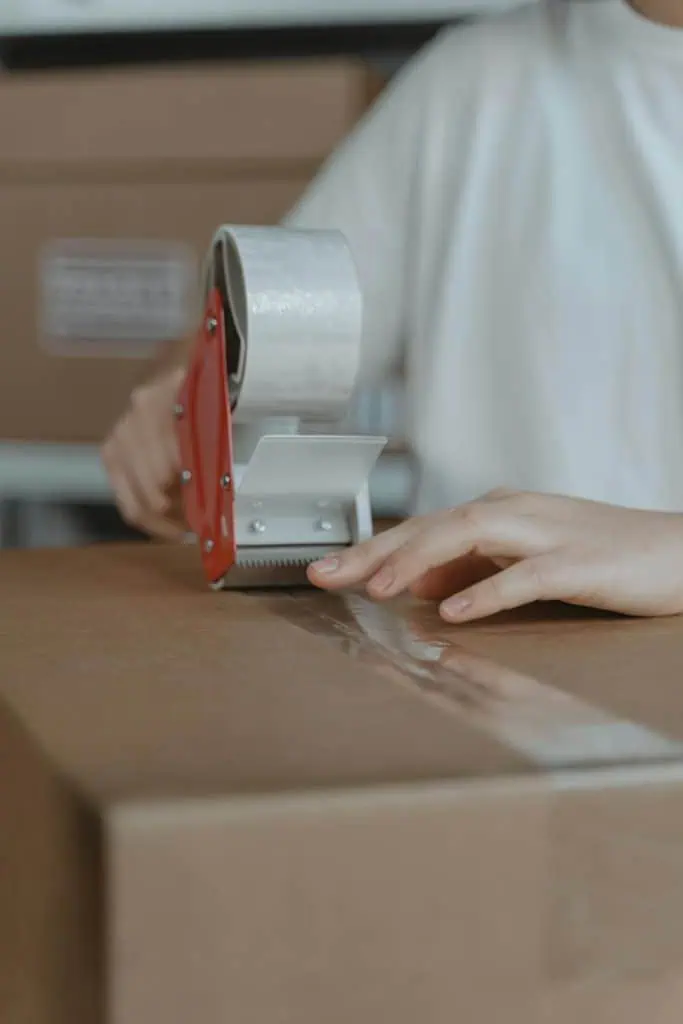An office move is enough to strike fear in the heart of even the bravest entrepreneurs amongst us. The logistics of it all can seem a little overwhelming, and the potential for disruption to our business can feel like a nightmare waiting to spill over into real life, right? But you know what? It really doesn’t have to be that way!
Table of Contents
Sure, your average office move is never going to be a walk in the park for you and your business’ employees, but you know what? You can be making your office move more manageable and a lot less daunting by doing the following:

Tips for Making Your Office Move
1. Start Early (Because Last-Minute Panic is Not Your Friend)
If you do only one thing we suggest here, then make it this! Moving office is not like moving from one flat to another (and that’s not exactly a walk in the park either).
Making your office move is a major operation where you need to take into account everything from files, desks and plants to sensitive IT equipment, and possibly confidential files. So, you need to plan, plan and plan some more if you want to ensure that things go as smoothly as they possibly can.

For this reason, it is a really good idea to create a moving timeline where you not only set out some key dates for things like packing, logistics and getting settled in, but you also plan for how you are going to keep those confidential files confidential and those computers secure. Basically, you can never start planning too soon.
2. Declutter, Donate, and Ditch
There’s no better time to do a full office detox. Go through those piles of paperwork, ancient furniture, and mysterious boxes. If you haven’t used it in the last six months, it’s probably safe to say it won’t be missed in the new office.
Consider donating old office supplies and furniture to local charities or schools, or recycle anything that’s just taking up space. Less clutter means fewer things to pack, fewer boxes to lift, and less stuff to unpack at the other end. And yes, you can finally let go of that stack of untouched promotional stress balls from 2010.
3. Self Storage is Your Secret Weapon
Self storage is a lifesaver during a move, especially if you’re transitioning between locations or need somewhere to stash things temporarily. Got furniture that won’t fit in the new space straight away? Boxes of archived files you don’t need access to every day? Pop them in self storage.
Self storage units are particularly helpful if you’re trying to stagger your move over a few days. It keeps your current office less cluttered, makes packing simpler, and gives you breathing room for a smoother transition. Plus, if you’re downsizing, a storage unit can help you keep essential items close without cramming them into an already tight new space.
4. Create an Office Survival Kit
On moving day, you’ll want to have a few essentials within arm’s reach. Pack a survival kit with basics like tea bags, coffee, a kettle, toilet paper, hand sanitiser, and snacks (no one’s going to argue with crisps and biscuits during a move).
Include important things like pens, tape, scissors, phone chargers, and a first aid kit. Moving is messy, and there’s nothing worse than reaching the new office and realising you have 25 boxes of files but no loo roll. Trust me, your team will thank you for thinking ahead.
5. Label Everything Like a Pro
If you’re tempted to skip the labelling part, don’t! Label every box, and then label it again. Be specific—don’t just write “office stuff” and call it a day. Note the room it’s going to, the contents, and any instructions like “fragile” or “this way up.”
Good labelling saves hours of rummaging at the other end. Even better, colour-code boxes by department. You could assign colours to each section (like blue for finance, green for marketing), which makes it easy to direct boxes straight to the right area on move-in day. That way, you’re not stuck wondering why IT’s cables ended up in the break room.
6. Keep Tech Set-Up Hassle-Free
Moving your tech setup is one of the trickiest parts of any office move. Before you start unplugging everything, take photos of the cable arrangements for reference. Label each wire and cable with the device it belongs to, so there’s no confusion when reconnecting at the new location.
Make sure to back up all essential data before the move, too. Even with the best planning, things can get lost or damaged, and you don’t want important files or data to disappear in the shuffle.
If you can, have IT come in the day before the move to get everything prepared, or schedule them to be on-site first thing in the new office to make sure the setup goes smoothly.

7. Plan for Minimal Downtime
Business doesn’t stop just because you’re moving, so plan the move for minimal downtime. Aim to schedule it over a weekend or during quieter business days if possible. You could even stagger the move to keep part of your team working from home or from the old location while the other half gets the new office set up.
Consider notifying clients and partners in advance if there’s a chance of disruption. They’ll appreciate the heads-up, and you’ll avoid any panicked “Why haven’t you replied to my email?” messages during the move.
8. Make the New Office Functional from Day One
When setting up the new space, focus on getting the essentials in place first. Desks, chairs, phones, and internet are the top priorities—get them up and running as soon as possible so everyone can hit the ground running.
It’s also worth doing a walk-through of the new office layout before move-in day, so you can plan exactly where everything should go. This makes it easier to direct the movers, and you won’t have to play furniture Tetris once the boxes start arriving. If you’ve hired an office designer, they can help make sure the new space is laid out for productivity from day one.
9. Send a Moving Day Guide to Your Team
A simple moving day guide can go a long way in keeping everyone organised and on the same page. Send an email to your team with all the key details: the moving schedule, what they need to pack themselves, any specific instructions, and what to expect on the first day in the new space.
If you’re splitting tasks, assign each team member a role, whether it’s managing the coffee station, coordinating the movers, or overseeing furniture assembly. The more organised the team, the smoother the move.
10. Take Care of the Paperwork Early
Notify your utility providers, internet service, and any other essential services well in advance. There’s nothing worse than arriving at the new office to find out the Wi-Fi won’t be connected for another week. And make sure to update your business address with clients, banks, and any important service providers ahead of time.
Don’t forget to update your company’s address on Google, social media, and your website so customers can find you without any mix-ups. It’s one of those small details that’s easy to overlook but makes a huge difference in keeping business running smoothly.
11. Conduct an IT Infrastructure Audit Pre-Move
Take this opportunity to evaluate your IT setup before you start moving it all. Assess which devices are outdated, which software needs updates, and whether your networking setup could use an upgrade.
This might include checking Wi-Fi coverage, deciding if you need a network extender, or even assessing whether you should move to cloud-based solutions instead of physical servers.
Having a streamlined, updated IT setup will make moving easier, and you’ll be ready to hit the ground running with efficient tech from day one in your new office.
12. Use Project Management Software to Coordinate Tasks
With so many moving parts (see what I did there?) to juggle then it makes sense to get some technical help in the form of project management software, when you are moving your business from one place to another.
This will enable you to keep better track of everything you are doing. So, set up a dedicated board with for each of your tasks from packing to labeling to unpacking, and follow it as best you can.
13. Do a Post-Move Debrief
Once the dust has settled, take a moment to reflect on what went well and what could be improved. Did the labelling system work? Was the moving day schedule realistic? Did any issues pop up that you didn’t anticipate?
A quick debrief helps you learn from the experience, and it’ll make any future moves (not that you’ll be rushing into another one!) a lot smoother. It’s also a good chance to get feedback from the team on their new workspace and see if any tweaks are needed to make it work even better.
Your next office move is sure to be smooth now!


